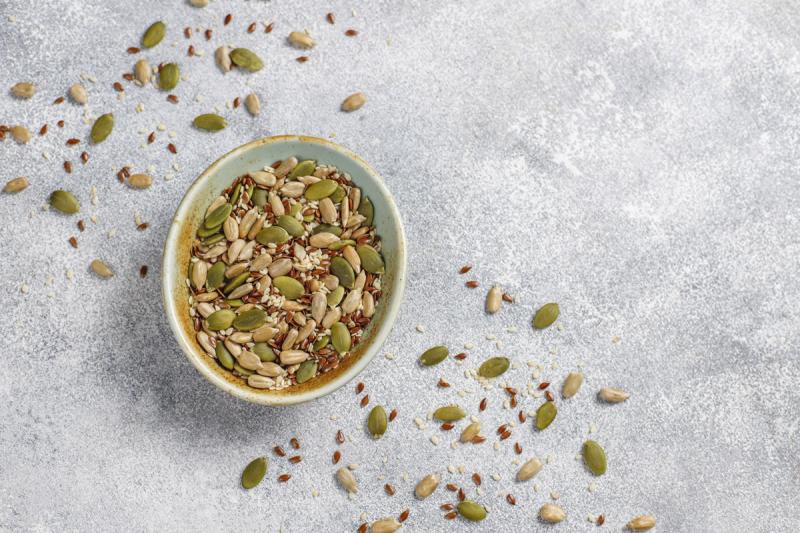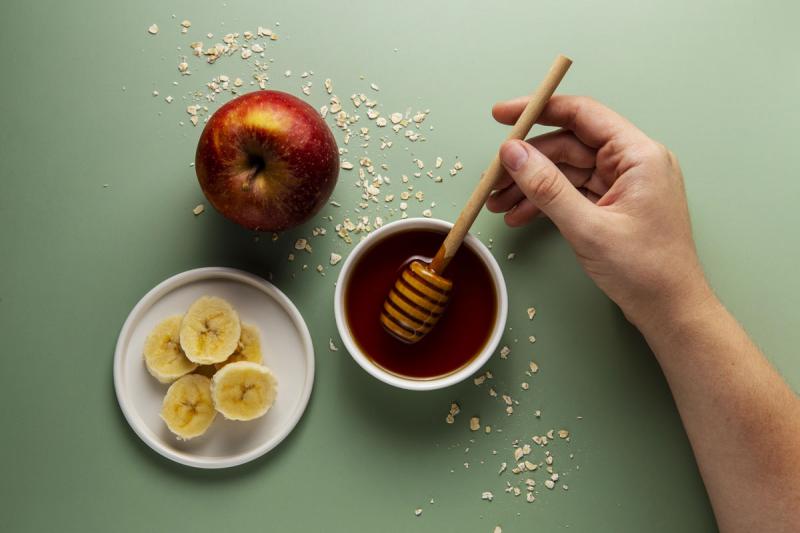With 2023 being observed as United Nations International Year of Millets, there is a renewed interest in millets around the globe. Nutritionally dense, naturally gluten free and a fighter against 21st century lifestyle conditions (such as diabetes and heart disease), their reputation is soaring and with good reason. These ancient grains have been a staple in various parts of the world for thousands of years and are making a comeback in modern diets due to their remarkable nutritional profile and environmentally friendly cultivation methods. This smart crop is good for the consumer, farmer and above all the planet, being resistant to climate-change and its challenges.
Meet the Millets
Millets are small cereal grains that belong to the grass family They are nutrient-dense, small-seeded grains that are widely grown in India. They have similar energy value as other staple cereals, but provide added benefits of high fibre, vitamins, minerals and antioxidants. There are many different varieties of millets, each with a unique nutritional value.
Millets are classified into Major Millets and Minor Millets based on their grain size. Major millets include sorghum, pearl millet and finger millet. Barnyard, kodo, foxtail, little and proso are the minor millets. There is another class of millets—the pseudo millets—which includes buckwheat and amaranth.
Millets as superfood
The tiny “grain” is gluten-free and highly nutritious as it is packed with vitamins and minerals. With higher proportion of complex carbohydrates, resistant starch & fibre, it helps mitigate different lifestyle conditions It has good-quality fat, is rich in B vitamins especially niacin, pyridoxine and folic acid and offers good amount of calcium, iron, potassium, magnesium and zinc making them a preferable choice over the cereal grains. Millets also contain several antioxidants. They are also recommended for the well-being of infants, pregnant and lactating mothers, the elderly and convalescents in various suitable forms. By any nutritional parameter, millets are miles ahead of rice and wheat and be aptly termed as “superfood”.
Health Benefits of Millets
The important nutrients present in millets deliver following health benefits:
- These are a valuable source of micronutrients vital for good immunity and overall health.
- These are highly nutritious, non-glutinous and non-acid forming foods. Hence, they are soothing and easy to digest. They are the least allergenic and most digestible grains available.
- These are an excellent source of dietary fibre, which aid digestion, promote satiety and help in eliminating disorders like constipation, excess gas, bloating and cramping.
- A very high proportion of the millet grain comprises dietary fibre and non-starch polysaccharides which help in weight regulation.
- They have low glycaemic index which means they have a minimal impact on blood sugar levels, thus beneficial for
- Millets are naturally gluten-free, making them an excellent choice for individuals with celiac disease or gluten sensitivity.
- Being rich in antioxidants millets are beneficial against diseases like heart problems, high blood pressure, inflammatory diseases and cancer.
- The high fibre present in millets plays a major role in cholesterol lowering LDL (bad cholesterol) from the system and increasing HDL (good cholesterol).
- Fermented millets promote the growth of Gram-negative bacteria that makes them an effective probiotic
- The rich magnesium content in it reduces menstrual cramps and has the potential to regulate menstrual cycle.
- Antioxidants present in it fight free radicals in the body and neutralize them thereby slowing down the ageing process.
- Millets can improve a person’s mood due to the high concentration of the amino acid tryptophan.
- Good for senior citizens as these are energy-dense, rich in protein, fibre, vitamins and minerals, are easily digestible and hypo allergenic.
Unique Health Benefits and Usage of Major millets
Sorghum – Jowar
- Sorghum is rich in a variety of nutrients, including B vitamins (thiamine, riboflavin, niacin, folic acid and beta carotene), which play an essential role in metabolism, nerve cell development and boosting health of hair and skin.
- It also contains the goodness of iron that is important for immunity, energy and overall vitality.
- It is traditionally malted, fermented or sprouted to prepare gruels for toddlers for overall physical and cognitive growth and development along with building a good gut health in children.
Usage
Sorghum is generally used to make rotis. It is easy to replace rice or quinoa with whole sorghum in most recipes. It can be ground into a meal and consumed as porridge.
Pearl millet – Bajra
- Pearl millet has a high energy content compared to other millets.
- It is loaded with omega-3 fatty acids and other nutritional fatty acids good for our heart health and general well-being.
- It helps in bone growth development and repair as it is rich in calcium and phosphorous.
- Its B vitamins are particularly useful in preventing hair loss.
- Pearl millet contains high concentration of magnesium which helps reduce severity of respiratory problems for asthma patients and is also effective in reducing migraine attacks.
- The high fibre content in pearl millet is also known to reduce the risk of gall stone occurrence. The insoluble fibre content in pearl millet reduces the production of excessive bile in our system. Excessive amount of bile secretion in our intestine often leads to aggravate the condition of gall stones.
- Due to its hypo allergic property, it can be safely included in the diets of infants, lactating mothers, elderly and convalescents.
Usage
Bajra grain can be used to make khichri and porridge. Ground flour is used to make roti.
Finger millet – Ragi
- Ragi is an excellent source of calcium for growing children and aging people. Ragi consumption helps in development of bones in growing children and in maintenance of bone health in adults. Ragi keeps diseases such as osteoporosis at bay and could reduce risk of fracture.
- It is a very good source of iron and helps in condition of anaemia.
- It enhances production of milk in lactating mother.
- It maintains skin health, with a good supply of vitamin E.
- It is beneficial in conditions of anxiety, depression, insomnia (sleepless nights) and migraines.
- Green Ragi is good for conditions blood pressure, liver disorders, asthma and heart weakness.
- It is traditionally malted, fermented or sprouted to prepare gruels for toddlers for overall physical and cognitive growth and development.
Usage
Ragi could be enjoyed in different forms and preparations such as roti, cheela, dosa, porridge, upma, biscuits, halwa etc. Ragi malt, or porridge being highly nutritious and easy-to-digest is a common weaning food.
Foxtail millet or Kakun
- It is loaded with minerals such as calcium, iron and copper, making it a nutritious option for pregnant women and malnourished children for strength and immunity.
- It cures phlegm, strengthens muscles and cures gastric disorders.
- It is an excellent source of vitamin B12 and aids in proper functioning of nervous system.
Usage
It is usually used in making porridge, idli, upma, payasam, biryani etc.
Little millet – Kutki
- Packed with polyphenols and antioxidants compared to the other millets it is a powerful anti-ageing food that also builds immunity.
- It also fights inflammation and is useful for asthma patients.
- It is rich in iron and helps to control anaemia.
Usage
It can be substituted with rice in pulao, payasam, khichadi, biryani etc.
Kodo millet – Kodon
- It is excellent for strengthening the nervous system.
- Regular consumption of this millet is very beneficial for postmenopausal women suffering from signs of cardiovascular disease, like high blood pressure and high cholesterol levels.
- It also helps in reducing the joints and knee pain and helps in regularizing the menstruation in women.
Usage
It can be cooked as a pulao, payasam or kheer and substituted for rice. It can be ground into flour and used to make dishes such as upma, idli, dosa, pongal, khichdi, snacks, porridge, biscuits and noodles.
Barnyard millet-Sawan
- Sanwa is rich in calcium and phosphorous, which helps in bone building.
- Those looking to improve their blood lipid profile can also try this millet as the antioxidants in it are useful for this purpose.
Usage
It can be used to make porridge or pulao.
Proso millet -chena
- Rich in calcium, proso is essential for bone growth and maintenance.
- It fights ageing and is beneficial for the nervous system too.
- It is beneficial in preventing pellagra (a skin disease which causes the skin to become dry, scaly and rough) caused due to the niacin deficiency.
- Traditionally it is used as recuperative food, especially post pregnancy or illness.
Usage
It can be used to make upma, pulao/biriyani, porridge etc.
Amaranth or Rajgira or Ramdana
- This pseudo millet is rich in antioxidants that fight free radicals and inflammation. Hence it is a great anti-ageing grain.
- It contains the amino acid lysine that is either absent or scarce in other grains; lysine helps in the absorption of calcium, building muscles and producing energy.
Usage
It can be boiled, like rice, ground into a gluten-free flour for baking, popped like popcorn or made into a nutritious porridge.
Buckwheat or Kuttu
- This millet contains rutin, a bioflavonoid known to control hypertension.
- Possessing anti-inflammatory properties, buckwheat particularly protects against childhood asthma.
Usage
Buckwheat is generally ground into a fine powder to make bread, puris and cheelas.
How much millet to Eat per day?
According to the ICMR-National Institute of Nutrition the quantity of millet should be around 33% of the total cereal consumption during the day. For example, for a reference man with sedentary activity 275 g of cereals is recommended including millets. So, if you are taking millets then you can take about 1/3rd or 33% (90-100gm of millets per day) of the recommended quantity. Side effects of millets only occur if it is consumed excessively. A balanced diet can help in lowering these adverse millets’ side effects. Furthermore, if millet is soaked overnight, rinsed, and then cooked, the antinutrient content can be decreased significantly.
How to include millets in the diet?
Millets can be used in preparing many dishes. Cereals can be replaced with millets for any preparation like rice, roti, dosas, cheela, cookies, cakes, porridges, upma, biscuits, idli, pancakes, ladoo, pulao, payasam, breads etc. You can add millets to soups for added texture and nutrition. Millets contain significant amounts of essential amino acids methionine and cysteine while limited amounts of essentials amino acid lysine. There are 9 essential amino acids and all of them are needed to build proteins, hormones and other important compounds. It is recommended to add legumes (which are rich in lysine) to millets in the ratio of 1:3 (legumes: millets) to improve the protein quality of millets.
Millets are a nutritional powerhouse with numerous health benefits and also sustainable farming advantages. Their resilience to harsh environmental conditions and rich nutrient content makes them an excellent choice for both human health and the planet. By incorporating millets into your diet, you can enjoy a diverse and nutritious range of foods. So, consider making millets a regular part of your meals and experience their wholesome goodness for yourself.



